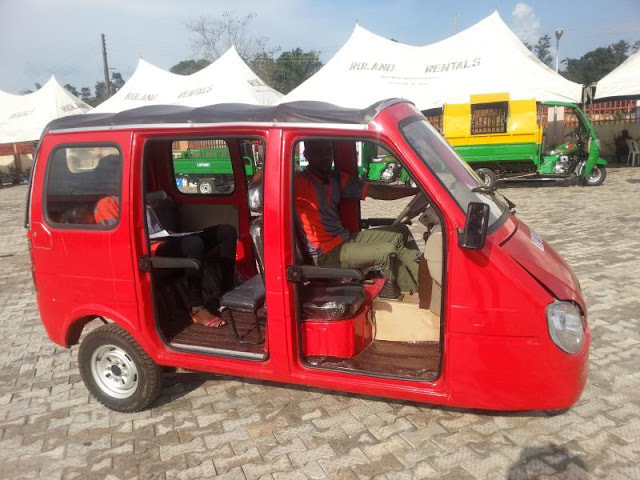Cargo Three WheeledHistorical research
It is a category that has been developing little by little and it exists since the beginning of the automotive industry. But no brand has yet formally established a category that houses these types of vehicles, since they are simply called Three-Wheeled, without distinguishing them from any other three-wheeled vehicle.
They are colloquially known as "motocarros" or "bicitaxis" in Latin America, defined as three-wheeled vehicles with motor, built to transport light loads. Although "motocarros" are any vehicle whose mechanical part derives from a motorcycle and the rear is a cargo compartment, so it is a much more generic definition that includes many types of vehicles. In fact, the vehicle commonly known as the first car powered by an internal combustion engine in history, the Benz Patent-Motorwagen of the year 1886 shares elements in common with the "motocarros". Actually the first internal combustion vehicle appeared in 1807, but this is another issue, you can see the full research here. The first three-wheeled car was a vehicle called the Voiturette designed by Léon Bollée in 1896, it had a rear wheel and two front guidelines. There were two front seats and another one in the back. During the following years, manufacturers such as Lagonda, Indian, Riley and Phoenix manufactured similar vehicles but with one seat in front and two behind.
A good example of one of the first vehicles that fit with the "motocarro" structure were those manufactured by the German company “Unternehmen Cyklon Maschinenfabrik” in 1902. This company began to produce three-wheeled cars driven by handlebars, called Cyklonette.
The tax benefits offered for this kind of vehicle in those years, made the Cyklonette very popular in metropolitan areas. In fact, the term Cyklonette became a generic designation to refer to three-wheelers manufactured in Germany. In 1914 there were already at least 11 different brands that built those vehicles
After all the research done, the earliest rickshaws precursor is the Cyklon Cyklonette 1904. In addition, it has a logical impact on the automobile history in a given geographical area.
The only approach to a formal establishment of this category has been made by Piaggio for its Ape model categorizing it as "Three-wheeled cargo". Also, in a less successful way, this segment can be referred to as "Three-wheeled light commercial vehicle ”, although it is never mentioned by formal authors, since the Three-wheeled LCV category refers to a much wider range of vehicles.
Piaggio Ape is the formal precursor of this category, but as we saw earlier, it wasn't the first hint.
At the end of World War II, most Italians were affected by the war, the means of transportation were missing and above all, financial means to acquire and maintain four-wheelers vehicles. In 1947 Corradino D'Ascanio, the inventor of Vespa, set out to build a light three-wheeled commercial vehicle to boost the economic reconstruction of Italy, an idea supported by Enrico Piaggio, the son of the founder of the firm .
The first 1948 model is shown in the upper image. It was mechanically a Vespa with two wheels added to the rear, with a flat bed structure at the top of the rear axle. The first brochures and sales announcements refer to the vehicle as VespaCar or TriVespa.
In 1964, the Piaggio Ape D model incorporated a cabin to protect the driver from the elements. Piaggio Ape has been in continuous production since its inception and it has been produced in a variety of different body styles in Italy and India.
Initially they were controlled by the handlebars of a Vespa but currently it is also offered with a steering wheel. The original Piaggio Ape was designed to accommodate only one person, but it can accommodate a second passenger, althought with little room, in their cabin. It has a door on each side to get out faster of the vehicle when delivering to different sides of the road, which translates into time savings.
In some specific models, the only difference with a "cargo mini truck" vehicle is that they have a single front wheel instead of two, in fact many times the same model can be sold in both variants. Vehicles with the cabin not integrated in the rest of the body are also considered.
These types of vehicles don't always have a dump truck in the rear, some variants are equipped to service passenger transport, not being restricted only to the transport of goods.
All vehicles added in this category are designed to service the transport of passengers or goods, so personal transport is excluded by definition.
Currently 42 alternative automakers produce Cargo Three Wheeled cars
Miguel Ángel Cobo (research) / Ana Isabel Rodríguez Lehto
0 Comments
Leave a Reply. |
Exotic car brandsFollow us on facebook
|








 RSS Feed
RSS Feed